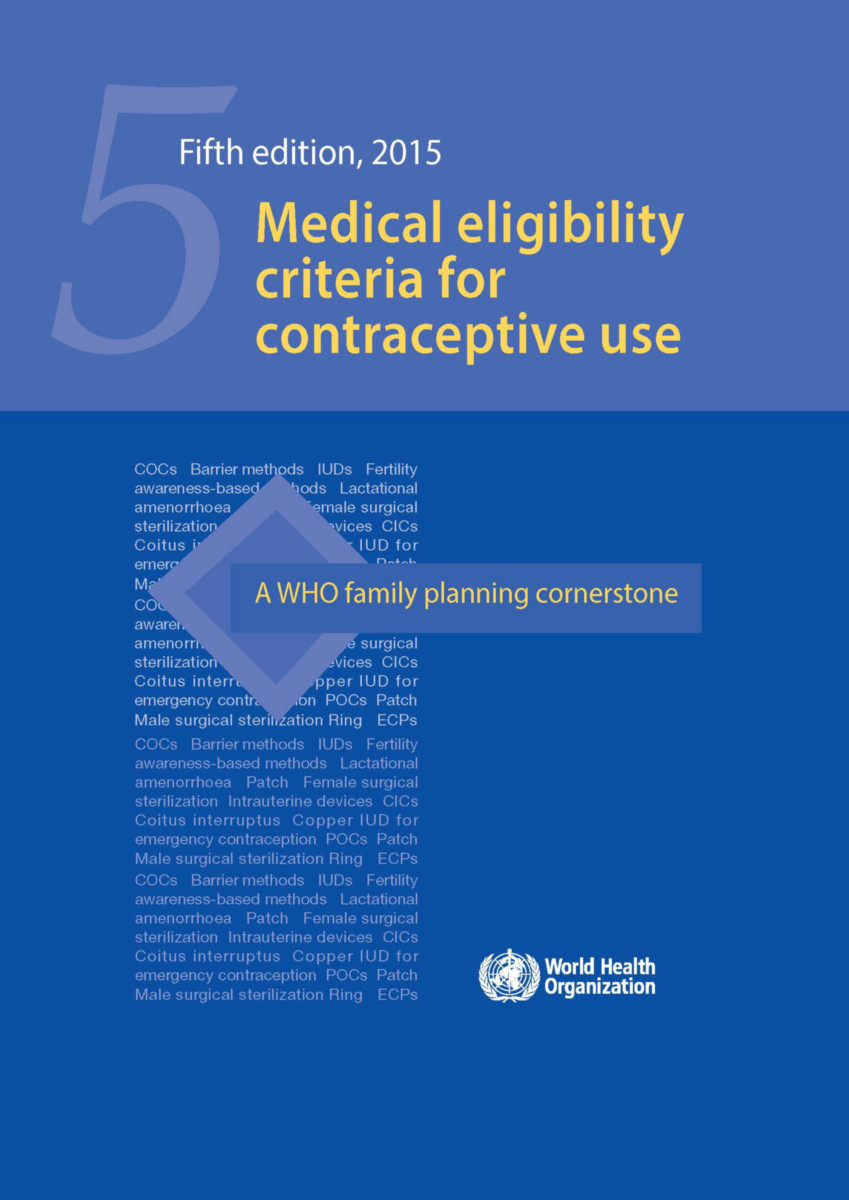Medical Eligibility Criteria for Contraceptive Use Edition 5 2015
- Publisher
World Health Organization - Published
17th December 2015 - ISBN 9789241549158
- Language English
- Pages 272 pp.
- Size 8.875" x 11.75"
This book is one important step in a process for improving access to quality of care in family planning. The WHO Medical Eligibility Criteria for Contraceptive Use, Fifth Edition, continues the series of periodic updates of guidance on the safety of various contraceptive methods for use in the context of specific health conditions and characteristics. The recommendations contained within this book are based on the latest clinical and epidemiological data.
The intended audience for this publication includes policymakers, family planning program managers and the scientific community. It provides guidance to national family planning/reproductive health programs in the preparation of guidelines for service delivery of contraceptives. Several tools and job aids are available from WHO and other sources to help providers use these recommendations in practice.
The book covers the following family planning methods: lowdose (35 mcg ethinyl estradiol) combined oral contraceptives (COCs), combined patch (P), combined vaginal ring (R), combined injectable contraceptives (CICs), progestogen-only pills (POPs), depot medroxy-progesterone acetate (DMPA), norethisterone enantate (NET-EN), levonorgestrel (LNG) and etonogestrel (ETG) implants, emergency contraceptive pills (ECPs), copper-bearing intrauterine devices (Cu-IUDs), levonorgestrel-releasing IUDs (LNG-IUDs), copper-IUD for emergency contraception (E-IUD), barrier methods (BARR), fertility awareness-based methods (FAB), lactational amenorrhoea method (LAM), coitus interruptus (CI), and female and male sterilization (STER).
The goal of this document is to provide policy-makers, decision-makers, and the scientific community with a set of recommendations that can be used for developing or revising national guidelines on medical eligibility criteria for contraceptive use. The document does not provide rigid guidelines but rather gives recommendations that provide a basis for rationalizing the provision of various contraceptives in view of the most up-to-date information available on the safety of the methods for people with certain health conditions.
Executive Summary
Combined Hormonal Contraceptives (CHCs)
Progestogen-only Contraceptives (POCs)
Emergency Contraceptive Pills (ECPs)
Intrauterine Devices (IUDs)
Copper IUD for Emergency Contraception (E-IUD)
Progesterone-releasing vaginal ring (PVR)
Barrier Methods (BARR)
Fertility Awareness-based Methods (FAB)
Lactational Amenorrhoea Method (LAM)
Coitus Interruptus (CI)
Female Surgical Sterilization
Male Surgical Sterilization
Summary Tables
World Health Organization
World Health Organization is a Specialized Agency of the United Nations, charged to act as the world's directing and coordinating authority on questions of human health. It is responsible for providing leadership on global health matters, shaping the health research agenda, setting norms and standards, articulating evidence-based policy options, providing technical support to countries, and monitoring and assessing health trends.


